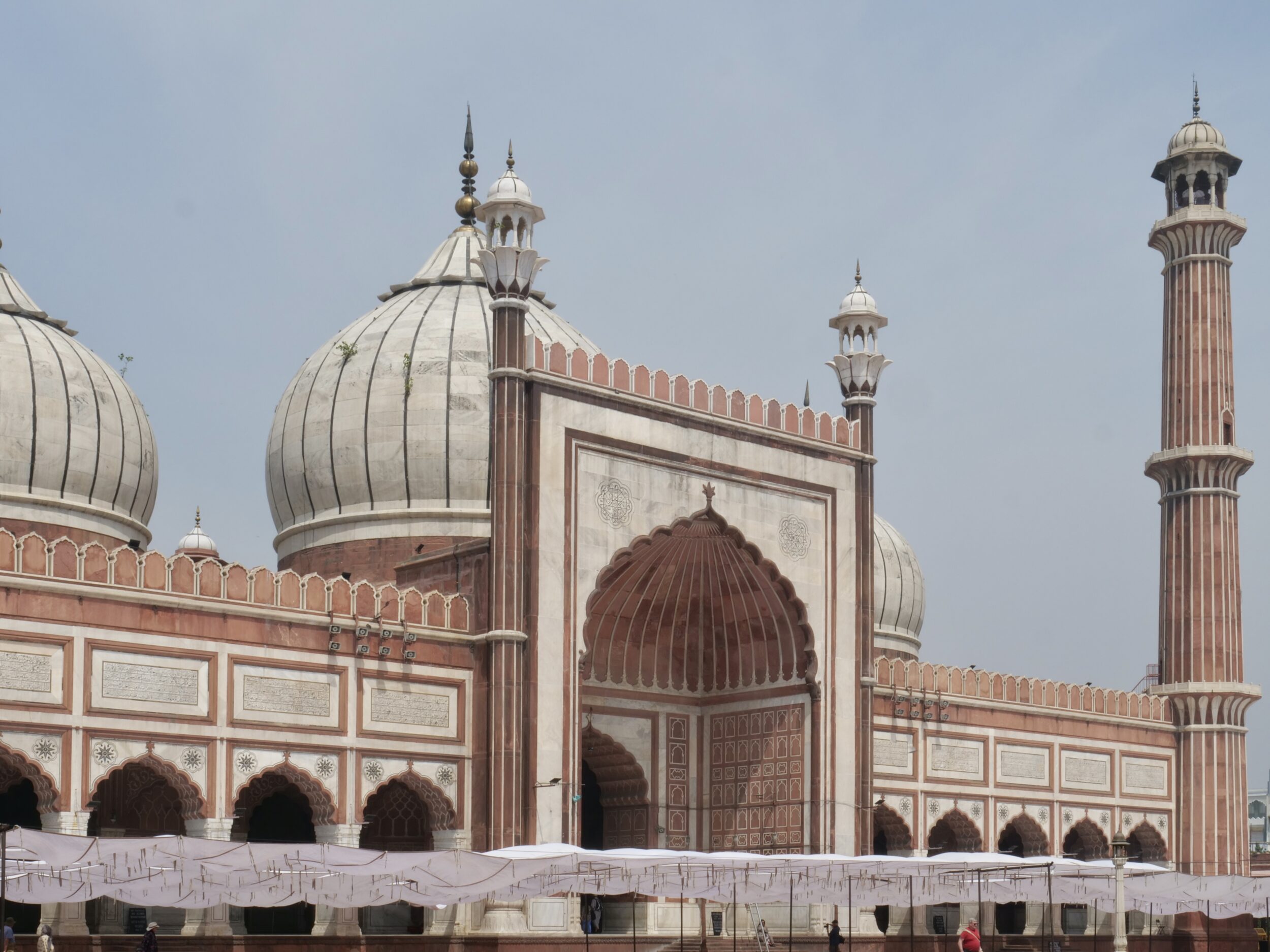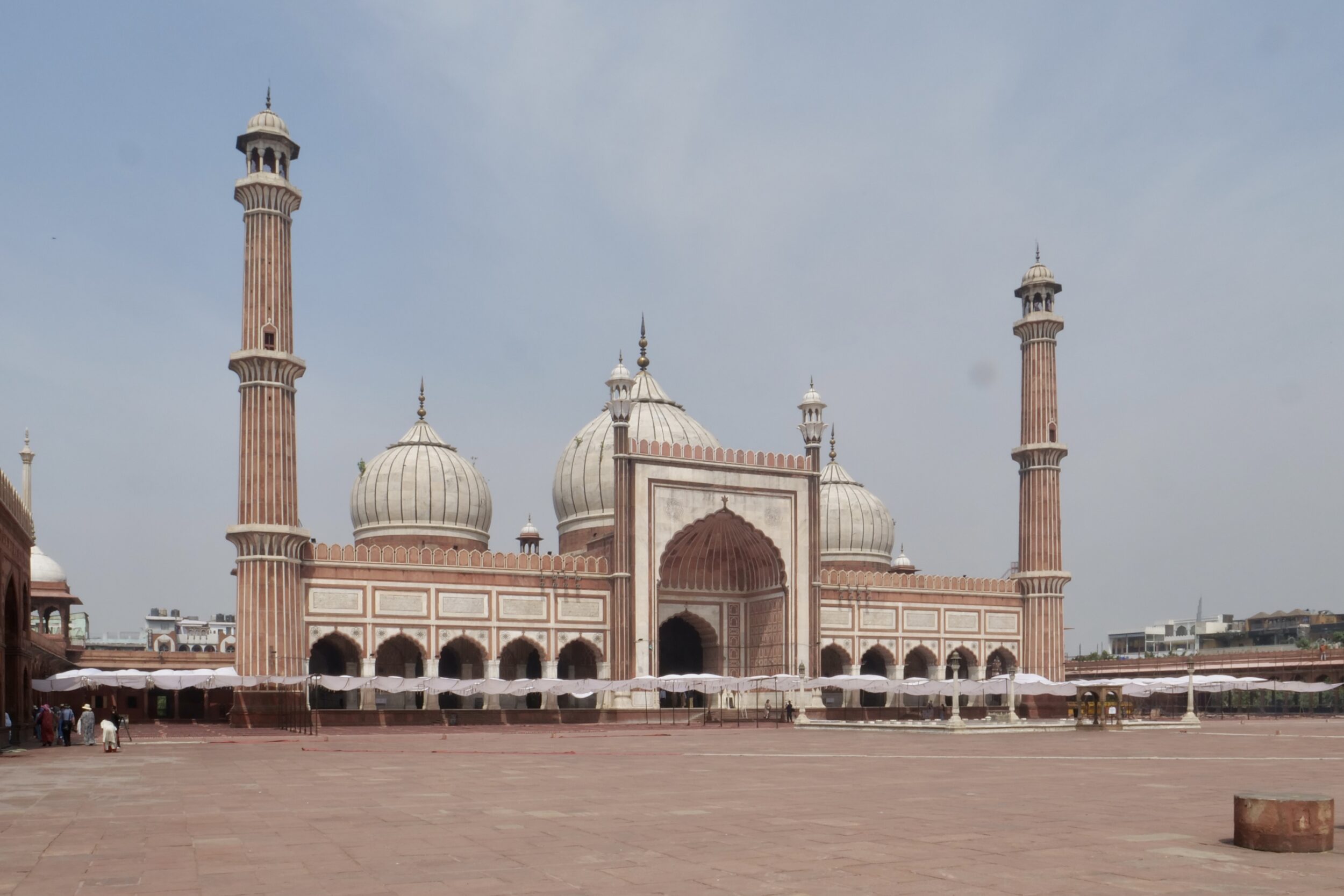In the context of the Indian subcontinent’s human history, what we now call “Old Delhi” is not very old.
The original walled city was meticulously planned; its foundation stone was laid in 1639.
Then named Shahjahanabad, it was the result of Emperor Shah Jahan’s decision to shift the Mughal Empire’s capital city, from Agra.
What is still Old Delhi’s most imposing structure was built between 1650 and 1656; at that time Jama Masjid was the subcontinent’s largest mosque.
In 2024 it remains one of India’s largest mosques – probably, its second biggest.
Shahjahanabad was the seventh city established in Delhi.
The first one – Lal Kot – was established circa nine centuries earlier, which is not hugely long ago, by Indian standards.
(Varanasi has been a continuously inhabited city for circa 3,000 years)
The post’s featured image looks across Jama Masjid’s square, which can accommodate 25,000 worshippers.
The image below gives a closer view.

Jama Masjid is still Delhi’s main mosque.
Its turbulent history very nearly ended when the Mughal Empire did, following the revolt of 1857.
The formerly somewhat-accommodating British colonisers (the British East India Company took Delhi in 1803, but initially left the Mughal Emperor “in place”, albeit reduced to “figurehead” status) opted to desecrate the mosque, rather than demolish it.
For five years it was a barracks for British and British-employed soldiers.
In 1862 the British handed the great mosque back to Delhi’s Muslims, albeit with strict conditions that it would henceforth be a place only of worship, not resistance.
As subsequent history would demonstrate, that edict proved unenforceable.
Click here to discover much more.
